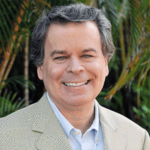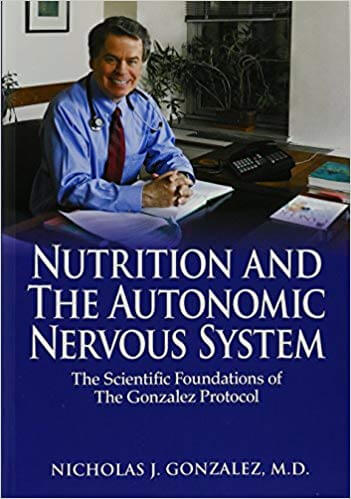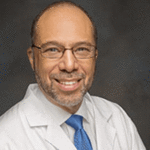The Gonzalez Protocol: no one diet suits everyone
Nicholas Gonzalez, MD saw a viable relationship between orthodox oncology and natural medicine. He understood there is not a one-size-fits-all diet. His research and clinical work of nearly 30 years shine a light on how nutrition, proteolytic (pancreatic) enzymes and detoxification were vital components of a scientifically-proven holistic approach to treating cancer and other degenerative diseases.
Today, many believe Dr. Gonzalez’s work was cutting edge. Others have their doubts and are vocal critics, fiercely denouncing natural cancer treatments with conventional “cut, burn, and poison” approaches.
Contrary to some characterizations, Dr. Gonzalez was not a “quack.” He relied on science and research to form his opinions. He graduated Phi Beta Kappa and magna cum laude from Brown, with a degree in English literature. He worked as a journalist for Time and New York Magazine for eight years during the 1970s, focusing on health-related issues. It was during this time that he became interested in medicine and scientific research.

Dr. Gonzalez treated patients with all types of cancers as well as those with a variety of other problems, ranging from chronic fatigue syndrome to multiple sclerosis. Each treatment protocol is individualized for each patient, regardless of the underlying problem.
• The Gonzalez Protocol
Dr. Gonzalez’s postgraduate premed work was at Columbia. He earned a medical degree from Cornell in 1983 and worked at Memorial Sloan-Kettering Cancer Center while in med school. His internship in internal medicine was at Vanderbilt.
No, Dr. Gonzalez was undoubtedly not a “quack.” His educational experience was impeccable.
As a medical student, Dr. Gonzalez became aware of the work of a dentist, William Donald Kelley, who claimed to have cured his own liver and pancreatic cancer – without surgery, radiation, and chemotherapy. Dr. Kelly used nutritional therapy, a combination of pancreatic enzymes, minerals, vitamins, and coffee enemas.
Dr. Gonzalez’s investigation into Dr. Kelley’s treatment sparked a desire within Dr. Gonzalez to learn more about nutrition and cancer. “The idea of killing the cancer cells without also killing those that are healthy seemed interesting to me,” he told The New Yorker in 2001. [1]
“Kelley was a weird man, and he was eccentric,” Dr. Gonzalez said. “People considered him a quack. I understood all that, yet I had no choice other than to face the fact that he had hundreds of patients with an obviously terminal disease who were still alive 5, 10, and 15 years later. It was there in the data, and to me, ultimately, data are the only things that can tell the truth.”
However, from the conventional perspective, Dr. Kelley's data lacks quantifiable standards and peer-reviewed publications based on his observations.
Birth of The Gonzalez Protocol
Despite Dr. Kelley being scrutinized and shunned (his dental license was suspended), Dr. Gonzalez looked into Kelley’s patient case histories. After interviewing more than 400 Kelley patients and reviewing their medical records, Dr. Gonzalez concluded that Kelley’s nutritional therapy was a viable alternative to orthodox treatments.
Ultimately, Dr. Gonzalez’s nutritional protocol was developed based on the work of Dr. John Beard, Dr. Max Gerson, Dr. Francis Pottenger, Dr. Ernst Gellhorn, and dentists Weston Price and Kelley.
Dr. Gonzalez opened a private medical practice in 1987 in New York and treated patients for nearly 30 years. Working with colleague Dr. Linda Isaacs, Dr. Gonzalez advocated a nutritional regimen similar to that of Dr. Kelley. The Gonzalez Protocol is based on three pillars:
- Diet: Individualized diets ranging from vegetarian to eating organic grass-fed beef 2-3 times a day.
- Supplements: Customized vitamins, minerals, and supplements designed to balance your autonomic nervous system. Dr. Gonzalez also developed his own pancreatic enzymes for his patients and then licensed them to Allergy Research Group.
- Detoxification: Several daily and monthly detox procedures including juicing, skin brushing, and coffee enemas.
In 1994, Dr. Gonzalez had a breakthrough with his protocol: a pilot study with the National Cancer Institute for 11 patients with inoperable pancreatic cancer. Five of the patients lived for more than two years; two patients survived more than four years. By comparison, no patients in a comparative group treated with chemo survived more than 19 months.
Five years later, the National Institutes of Health funded a controlled trial at Columbia. It compared The Gonzalez Protocol with chemotherapy for 55 patients who had advanced pancreatic cancer. … Or, it was supposed to.
The Truth about the NCI-NCCAM Clinical Study
“There is really only one truth”
“Unfortunately, the trial was poorly run and ended in discord, with what we believe to be meaningless data published by the academic researchers involved,” Dr. Isaacs said. “Dr. Gonzalez’s book, What Went Wrong: The Truth Behind the Clinical Trial of the EnzymeA protein that speeds up chemical reactions in the body. Treatment of Cancer, goes into detail about the problems with the study, including a number of issues not discussed in this article that I sincerely hope are confined to the institution involved and are not endemic to the medical establishment.” [2]
She addressed her views in Research Battles: Survival Tips From a Veteran. Of note, the controlled trial results were presented at an NIH workshop but never published in a peer-reviewed publication.
The Gonzalez Foundation stands firmly behind its contention of more than 120 published cases – Conquering Cancer Volumes One and Two – that include examples of biopsy and MRI-confirmed metastatic cancers. The foundation contends the cancers were treated only with pancreatic enzymes and the other elements of his protocol – and without any other treatment – including people with Stage III and IV pancreatic cancer who are alive more than 10 years later.
In 2015, Dr. Colin Ross wrote in “Methodological Flaws in the Chabot Trial of Pancreatic Enzymes” for the International Journal of Cancer Prevention Research that, “Due to extensive missing information, readers of the paper reporting the trial would conclude that the study was valid. When this missing information is made available, as it is in the present report, it becomes evident that there were numerous serious methodological flaws in the study. No scientifically valid conclusions about the treatment of cancer with pancreatic enzymes can be reached from this study.” [3]
After the NIH study, clinical epidemiologist Mark N. Levine wrote in the Journal of Clinical Oncology: “I would like to focus the discussion on the validity of the use of a controlled observational design to establish efficacy in the Chabot et al study. Although 55 patients were enrolled onto the cohort study, nine more enzyme-treated patients than chemotherapy patients were analyzed. This imbalance is troubling. Fifteen patients were excluded, but one wonders whether they received treatment and were excluded after the analysis was performed. If this occurred, it could lead to bias.

Nutrition and the Autonomic Nervous System: The Scientific Foundations of the Gonzalez Protocol
“Second, in any observational study, there is the possibility of an imbalance in baseline prognostic factors between intervention groups that could confound analysis and potentially lead to bias. There was no statistically significant difference detected in baseline characteristics for many factors except total bilirubin and albumin. One wonders whether there were more liver metastases in the enzyme-treated group than in the chemotherapy group, but this information is not provided. The authors used multivariate analysis and propensity score adjustment to attempt to control for any potential imbalance in baseline characteristics; however, such adjustment does not correct for potential unknown confounders.” [4]
Levine added, “Complementary and alternative medicines are often bundled together under the acronym CAM, the goals of which are to increase the efficacy of conventional cancer treatment programs, reduce symptoms, and improve quality of life for patients with cancer. CAM is grouped into four domains to account for the wide diversity in therapies: mind-body medicine, biologically based practices, manipulative and body-based practices, and energy therapies.
“… As a clinician, I recognize that many of my patients seek CAM therapies, and many are using them and afraid to tell me. I am troubled by the lack of evidence for many of these therapies and the costs that patients incur in using them. In the past, there was a reluctance to subject CAM therapies to the same standards of evaluation as those for conventional therapies. Should CAM therapies undergo the same type of rigorous evaluation to which conventional therapies are subjected? Absolutely! When authors submit clinical trials to JCO, they are instructed to follow specific guidelines. These guidelines should be the same whether the intervention is chemotherapy, radiation, an herbalA product made from a plant that is thought to be useful in treating a disease or staying healthy. Herbal supplements are taken by mouth. remedy, or a psychosocial intervention.”
While there are issues with reporting CAM case studies, it can be done and is recognized utilizing parameters described by the National Cancer Institute. [5]
“The Chabot trial was not a valid test of the treatment of cancer with pancreatic enzymes because of 39 patients assigned to the enzyme arm, only one fully completed the protocol and 30 either did not start the protocol or adhered to it very briefly,” notes Dr. Ross. “This is like treating fever with 5 mg of aspirin and concluding that aspirin is not effective.”
Statistics: Why Meaningful Statistics Cannot Be Generated From a Private Practice
Dr. Gonzalez once said, “There is really only one truth. Either cancer patients get better with my treatment or they do not. And if they do, I could not care less whether it involved moon dust or microbes from Pluto. What matters is that many – not all, by any means – of my patients are alive when they should be dead.”
Reviewing CAM treatments
CDR Colleen Lee, a member of the NIH Public Health Service Commissioned Corps, noted for safe and effective cancer CAM modalities to gain acceptance in evidence-based conventional medicine, the “translational research process” must occur.
“Thus, CAM modalities presently in use for cancer symptom management or treatment must be studied in sequential order: generating in vitroThis means "outside the body" – or in the laboratory. data, animal model data, and then human clinical trial data.” [5]
The Office of Cancer Complementary and Alternative Medicine (OCCAM) internally classifies cases according to the degree to which they fulfill best case series (BCS) criteria. Potentially persuasive cases meet the following criteria:
- A pathologic diagnosis of cancer from a tissue specimen obtained prior to an alternative medicine intervention and after any conventional anticancer therapy.
- Documentation of tumor regression appropriate for the disease type and location.
- The absence of confounding or concurrent anticancer therapies.
- Documentation that a patient used the alternative medicine intervention under evaluation.
BCS is a retrospective chart review that describes a series of patients who all appear to have benefitted from the treatment under study, said Richard L. Nahin, Ph.D., M.P.H., Lead Epidemiologist, National Center for Complementary and Integrative Health. “The BCS has been advocated as the first research step for evaluating complementary and alternative medicine (CAM) treatments for cancer. However, the research value of the BCS has not been assessed. To address this deficiency, the present study evaluates the primary characteristics of the BCS process through a systematic review of the English language scientific literature.”
Twenty-four individual BCS investigating 16 unique CAM treatments for cancer were identified. About half of the BCS reported evidence of tumor regression in association with a particular CAM treatment, but only six contained documentation adequate for publication in peer-reviewed journals. For these six BCS the number of responders per BCS ranged from 2 to 12 (median, 3.5), the proportion of responders in the total number of evaluated cases varied from 6% to 100% (median, 40%), and the proportion of evaluated cases to identified cases ranged from 18% to 53% (median, 29%). [6]
The primary factors confounding the identified BCS were lack of documentation of disease and/or the use of concurrent or recent conventional treatment. Despite these general deficiencies, four BCS were sufficiently convincing to warrant follow-up clinical trials:
- Antineoplastons
- Hydrazine sulfate
- Laetrile
- Kelley-Gonzalez
Lee added, “These data suggest that while well-documented BCS do have an impact on the research agenda, in general, additional rigor is needed during their compilation.”
Building on the Gonzalez legacy
In his book Nutrition and The Autonomic Nervous System – The Scientific Foundations of The Gonzalez Protocol, Dr. Gonzalez explains why no one diet suits everyone, proves the effectiveness of individualized diets (biochemical individuality), and proves that by utilizing various combinations of nutrition and supplements to balance the autonomic nervous system our bodies can heal themselves without pharmaceutical drugs.


“I do know this, though. If you are unwilling to evaluate something promising simply because it seems to come from left field, then there is nothing new you will ever try.”
Dr. Jeffrey D. White
(The autonomic nervous system controls unconscious or automatic body functions. It governs the cardiovascular system, the digestive system, the endocrine system, and immune function.)
Dr. Gonzalez died on July 21, 2015, at his home in New York. His legacy, however, continues to be a beacon of hope for those who choose natural cancer treatments. At the time of his death, Dr. Gonzalez had written more than 120 cancer patient case studies from his private practice. These studies were published in Conquering Cancer Volumes One and Two.
Today, the Nicholas Gonzalez Foundation – a 501(c)3 foundation created by Dr. Gonzalez’s wife, Mary Beth – carries Dr. Gonzalez’s torch. The foundation is keeping The Gonzalez Protocol alive through clinical research, education, and a training program for practitioners.
A team of doctors is actively working with the foundation to bring this holistic treatment to patients around the world. To complete Dr. Gonzalez’s desire to have his work scientifically tested, the foundation is developing research on the effectiveness of pancreatic enzymes for treating cancer. Similar to Dr. Gonzalez, they believe the proof is in the data.
Cancer Tutor will announce when the training program is available. Meanwhile, interested patients and practitioners can access Dr. Gonzalez's content, interviews, and videos on the foundation’s website.
In Michael Specter’s 2001 profile of Dr. Gonzalez for The New Yorker, Jeffrey D. White, director of the office of cancer complementary and alternative medicine at the National Cancer Institute, said: “Dr. Gonzalez has really been more aggressive at attempting to get his work properly evaluated than any person I have ever encountered. He has some interesting data. Perhaps it will lead to something useful, and perhaps it will not. That is why we do trials.
“I do know this, though. If you are unwilling to evaluate something promising simply because it seems to come from left field, then there is nothing new you will ever try.”
References
- Michael Specter. The Outlaw Doctor. The New Yorker. https://www.newyorker.com/magazine/2001/02/05/the-outlaw-doctor
- Isaacs L. Integrative Medicine: A Clinician’s Journal. Research Battles: Survival Tips from a Veteran. https://www.ncbi.nlm.nih.gov/pmc/articles/PMC4712871/
- Dr. Colin A. Ross: Methodological Flaws in the Chabot Trial of Pancreatic Enzymes for Cancer Therapy. International Journal of Cancer Prevention Research. https://pdfs.semanticscholar.org/d27c/064c25d32639782de8d678621e176397f206.pdf
- Mark N. Levine. Journal of Clinical Oncology. Conventional and Complementary Therapies: A Tale of Two Research Standards? https://ascopubs.org/doi/full/10.1200/JCO.2010.28.5320?url_ver=Z39.88-2003&rfr_id=ori%3Arid%3Acrossref.org&rfr_dat=cr_pub%3Dpubmed&
- NCI Best Case Series Protocol https://cam.cancer.gov/indentifying_novel_cam_therapies/best_case_protocol.htm
- Lee CO. Translational Research in Cancer Complementaryand Alternative Medicine: The National CancerInstitute’s Best Case Series Program. https://www.ncbi.nlm.nih.gov/pubmed/15108425
- Nahin RL. Use of the Best Case Series to Evaluate Complementary andAlternative Therapies for Cancer: A Systematic Review. https://www.ncbi.nlm.nih.gov/pubmed/12516038
